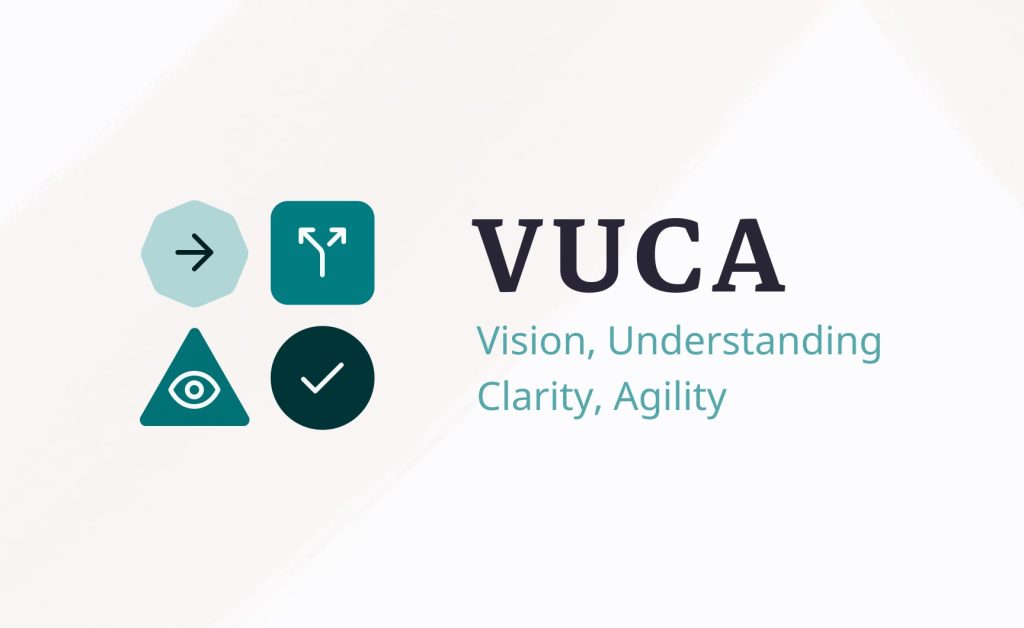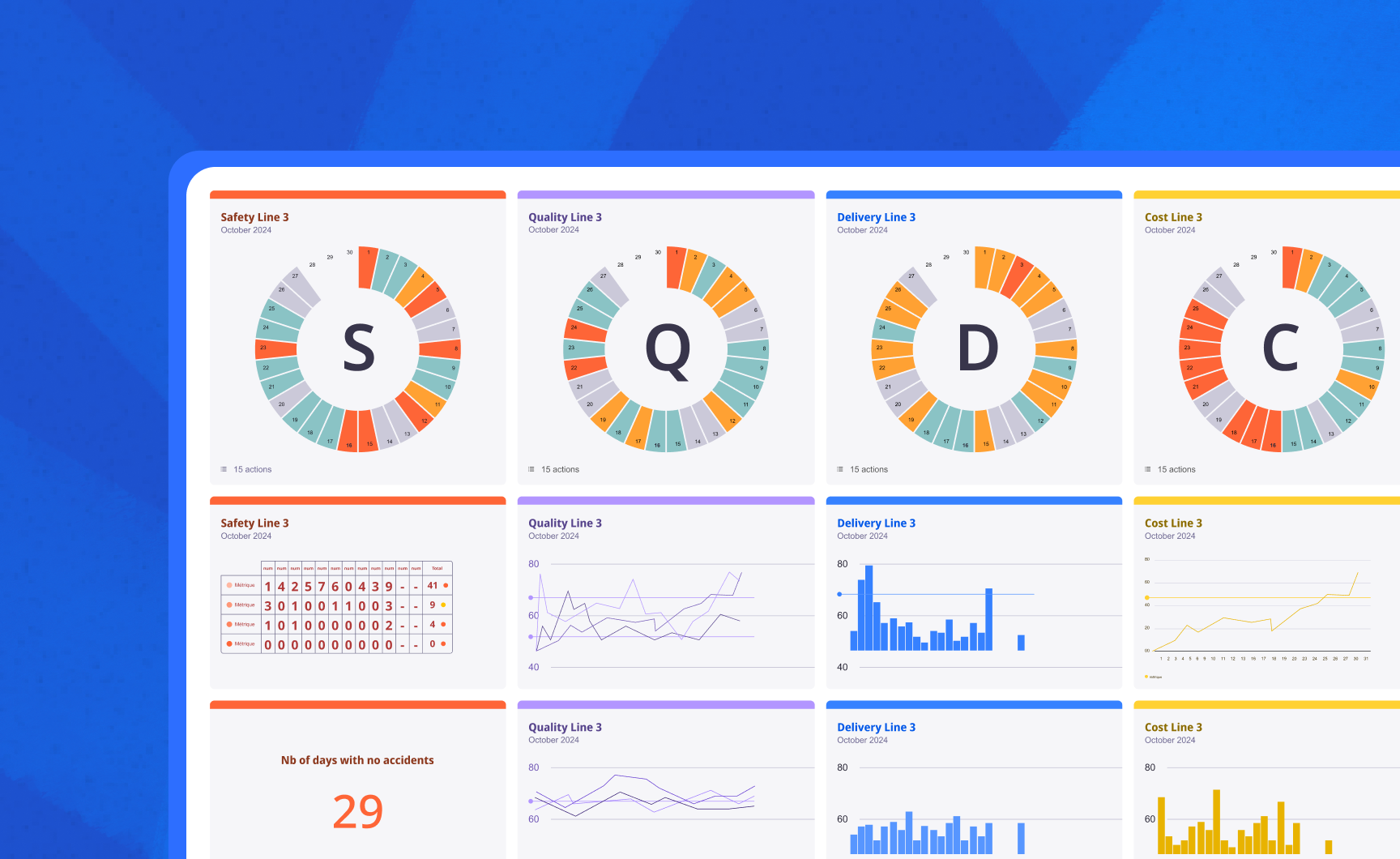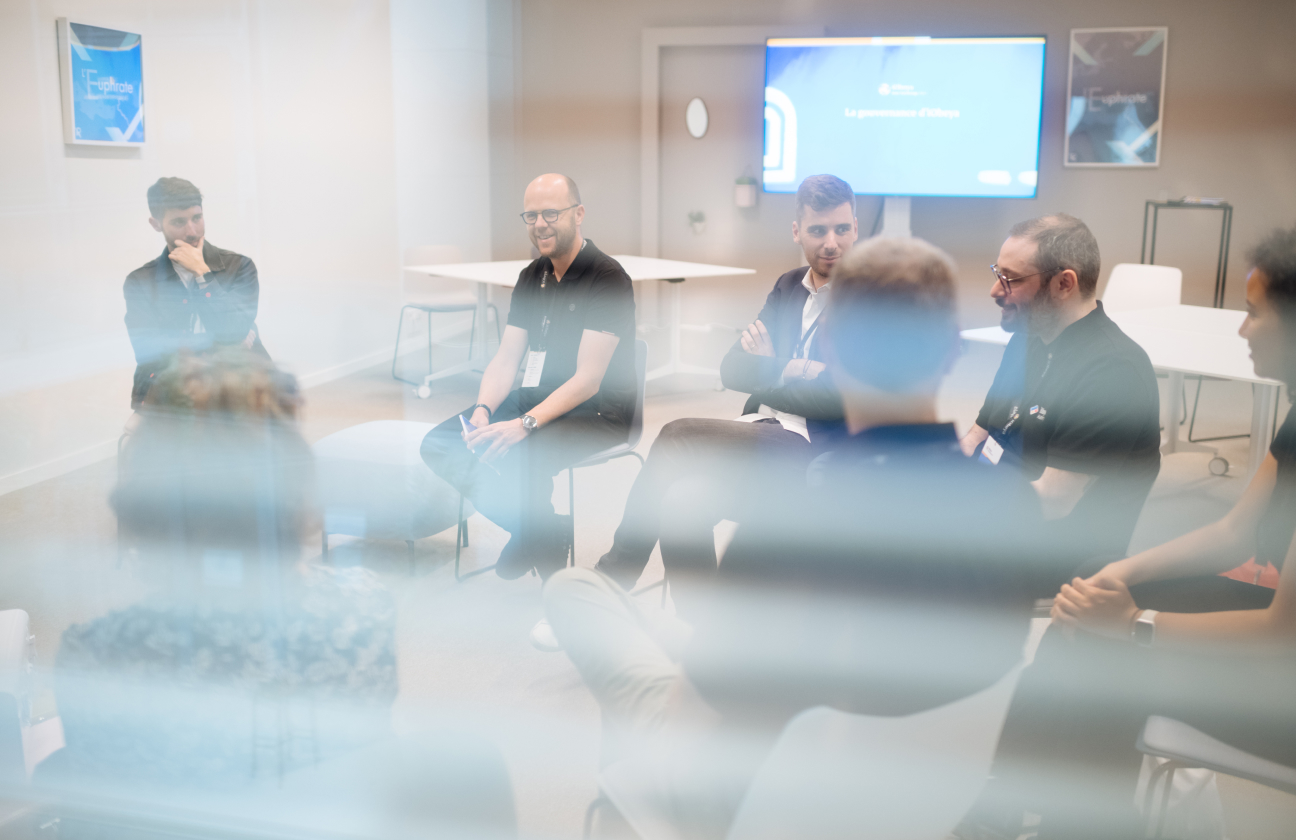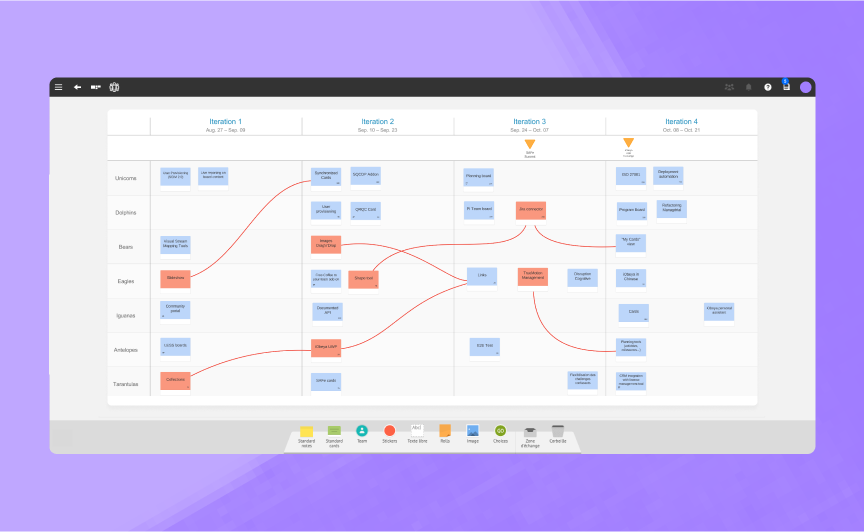Hey, let’s start your
iObeya journey!
Imagine what it feels like being the captain of a ship…
- you’re heading into a storm
- it’s your first time at the helm
- with a brand new crew
- toward an unknown destination
Maybe you don’t need your imagination. Maybe you know what this feels like.
This is your real-life VUCA – Volatile, Uncertain, Complex, and Ambiguous. The challenge is that people and organizations have been conditioned to be victims of VUCA. This victim mindset can hinder ability to affect what can be controlled, let alone respond effectively as circumstances change.
What would it take to re-frame this situation into what Bob Johansen calls VUCA Prime – Vision, Understanding, Clarity, and Agility? VUCA Prime is rooted in human-centricity, establishing a deep connection between leaders and their people through purpose-driven communication. With a deep connection, information is shared more freely, aligning decisions and actions with the organization’s overall direction.
Lean Brings VUCA Prime to Life
At the heart of the Lean methodology is delivering to the customer what they want, when they want it, and at the price they want, regardless of product or service industry. In order to achieve this level of customer responsiveness and organizational cost effectiveness, Lean emphasizes empowering and enabling the people closest to the work – the ones delivering value to the customer.
Lean businesses are structured to achieve the vision (create value for the customer) and values (empower and enable people closest to the work), and leaders communicate consistently using a structured approach. Structure does not mean inflexibility, rather that the right elements are in place to create a system and ensure messages are sent and received. With a structure in place, all elements are organized into the foundational system for creating processes which flow from person to person and task to task to satisfy the customer.
As part of a dynamic ecosystem, the organization must be constantly seeking understanding. Understanding of how well it is meeting customer needs by integrating performance management and use of QCD visualizations into its structure. Performance management is designed to measure process efficiency and effectiveness by tracking Key Performance Indicators (KPIs). Leaders and their teams meet regularly to review KPIs and celebrate when performance trends are going in the right direction and find solutions using tools such as Value Stream Mapping, fishbone diagrams, and 5 Whys when they’re not.
Clarity is critical to align all elements of the structure and ensure they are behaving in the desired manner. It is created by continually providing feedback against performance KPIs designed to answer the questions “are we still heading in the right direction” and meeting customer needs?
The ability to respond quickly to a stimulus that hits the system is Agility. How people respond must also be the right one and based on vision and values, understanding made visible by data-based KPIs using QCD indicators, and clarity through feedback and alignment. Agility is a coordinated movement toward an opportunity or away from a threat. To execute this well, an organization must be constantly evolving – fortifying its strengths and improving upon its weaknesses.
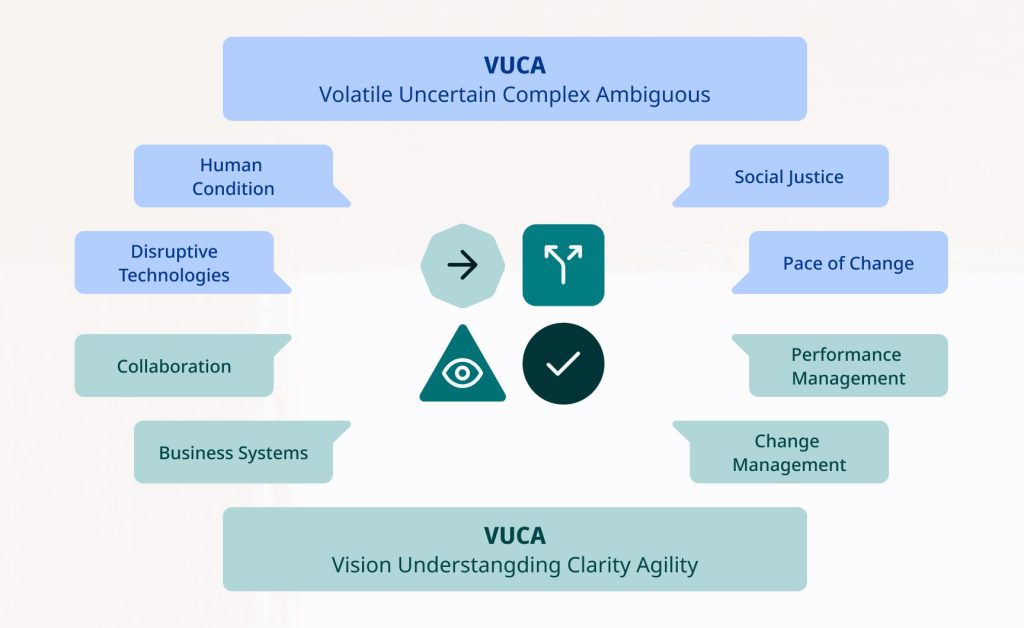
Lean is Action-Oriented
Creating the structure, system, processes, and tasks is not a one-time event. Each element must be regularly reviewed. Continuous improvement is not a department, rather a mindset for everyone at every level of the organization. Consistently delivering value is developed by leveraging practices to review KPIs, communicating plans and expectations, investigating problems, and escalating issues when help is needed. Connecting annual strategy deployment, quarterly executive check-ins, monthly leadership reviews, weekly team meetings, and daily huddle stand-ups, creates the engine for the business cadence to keep the organization moving forward and builds VUCA Prime capabilities. All of these practices and interconnections increase learning at the individual and organizational levels.
Visual Management is Velocity
Visual Management is the key to speed. “MIT neuroscientists find the brain can identify images seen for as little as 13 milliseconds.” This means that a well-designed infographic of the company values or graph that visualizes performance can create context and meaning almost instantaneously. On a simple stop-light chart, the “red” or “green” stands out immediately. A quick glance at a kanban card signals a need, and the relationship between the trend line and the baseline make performance transparent and obvious. Whether in a meeting or on the shop floor, Visual Management means quicker and more value-adding conversation via the visualization of complex data, and creates the ability to determine next steps and take action rapidly. Visual Management can be easily implemented within the system to facilitate the top-down, bottom-up, and horizontal sharing of information, providing management and employees clear direction.
The iObeya Digital Enterprise Visual Management System - from VUCA Victim to VUCA Prime
Applying Lean, Visual Management, and the iObeya digital solution for Enterprise Visual Management builds organizational resilience to future-proof your business. The VUCA world of Volatility, Uncertainty, Complexity, and Ambiguity is here to stay. Creating a VUCA Prime organization enhances resilience and enables responsiveness. In the digital visual environment of iObeya, information is just a click away: anytime, anywhere, any device (ATAWAD). The need for paper-based systems, no-value status meetings, and reading reports aloud together are eliminated. In iObeya’s digital environment, conversations become high-impact and precious time is given back to everyone’s day.
Through iObeya’s QCD module, KPIs are visualized to show performance and consolidated to express the health of the overall system. When questions or challenges arise, information and requests are rapidly escalated up the organization through boards in the same room or even room-to-room. This expedited process accelerates decision making and moves people to action. Knowledge is shared across teams to improve operations and minimize solving the same problems over and over again in different parts of the business. Through this rapid, organization-wide PDCA cycle, everyone becomes part of and contributes to the creation of a learning organization.
If you are ready to take the next transformational step in your Lean practices to fortify your organization, our experts at iObeya are happy to explore together how digitizing Lean rituals can address your needs.
Contact iObeya if you’re using only the digital whiteboarding component or you would like us to review your current Lean practices to maximize their value.
Johansen, Robert. Leaders Make the FUTURE: Ten New Leadership Skills for an Uncertain World. Berrett-Koehler Publishers, 2012.
The Mind Tools Content Team By the Mind Tools Content Team, the Mind Tools Content Team. “Managing in a Vuca World: Thriving in Turbulent Times.” Team Management Training From MindTools.com. Accessed September 30, 2021.
Trafton, Anne. “In the Blink of an Eye.” MIT News | Massachusetts Institute of Technology. Accessed September 30, 2021.



